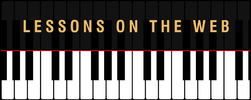|
Bach wasn’t really romantic… but Chopin certainly was. Bartok is a classic, but you won’t find him with the other classical composers. Has someone ever told you that Mozart was Baroque? Broke maybe…but Baroque - not at all. You’ve probably guessed that we’re talking about the different names for specific time periods throughout history of composers and the styles of music that they wrote, or write. If you’ve ever listened to two different composers, you may have noticed how the music sounds different, even though both are considered “classical” music. Listen to the following 2 samples and notice what differences you can hear in the 2 contrasting styles of music that is being played.
The first piece by Chopin sounds very lush and emotionally intense, while the second Bach piece sounds lighter, busier, and more like background music than the Chopin Nocturne. The reason for the differences, is that each composer belongs to a specific time period in Classical Music's history. There are several different time periods and each one has it's own unique style and group of composers included in it. Let's look at a few of them. There are 5 basic categories for the different styles of music composed since the 1600's. Prior to the 1600's, there are two other categories of musical styles that include Medieval and Renaissance composers; but generally speaking most of us will play music written in the following 5 categories: Baroque: (1600 - 1760) Baroque music transitioned us from the Renaissance style right on through to the Classical period with notable composers such as Bach, Vivaldi, Handel, Purcell, and many others. This period introduced tonality into music composition; creating a piece of music based on one specific key. Musicians improvised a lot during this time period, as composition was still fairly simple in terms of musical expression. Classical: (1730 - 1820) The Classical Period introduced music lovers and performers to lyrical lines in music instead of just chords. The piano became the lead keyboard instrument during this time, replacing the harpsichord in many orchestral and small ensemble pieces. Composers from this period include Haydn, Mozart, Beethoven, Schubert, and many others. Romantic: (1815 - 1910) The Romantic Period produced richly textured music that sounds much like it's name. It developed in large part as a reaction to the social and political thinking of that time. Romantic composers embraced nature, emotions, the spiritual, and the unknown. Famous composers from this time period include Chopin, Wagner, Brahms, and Mahler; to name a few. 20th Century: (1900 - 2000) & 21st Century: (since 2000) More modern music in the classical genre is known as 20th and 21st Century Music. Modern music is most notably known for its diversity and lack of traditional harmonic structure. Composers in these two periods include such greats as Bartok, Stravinsky, Charles Ives, Hindemith, and others. Here are a couple of other samples to listen to: The first one is from the Romantic Period, and the second one is from the 20th/21st Century Period.
The next time you are listening to something classical, see if you can identify which period it is from by the unique characteristics in the music. Each style mirrors its culture and tells a special story that will always play an important role in history.
Stay Tuned to LessonsOnTheWeb to learn much more! Leave a Reply. |
AuthorMost blogs written by Archives
June 2020
Categories
All
|


 RSS Feed
RSS Feed